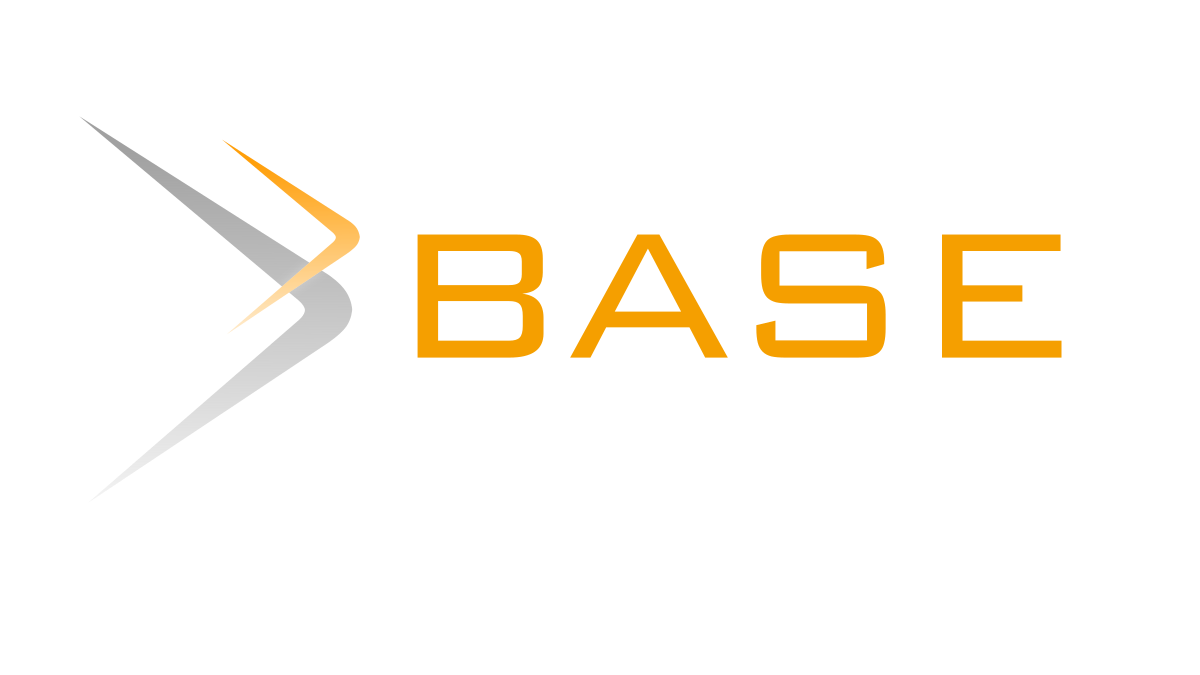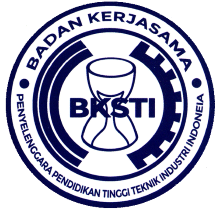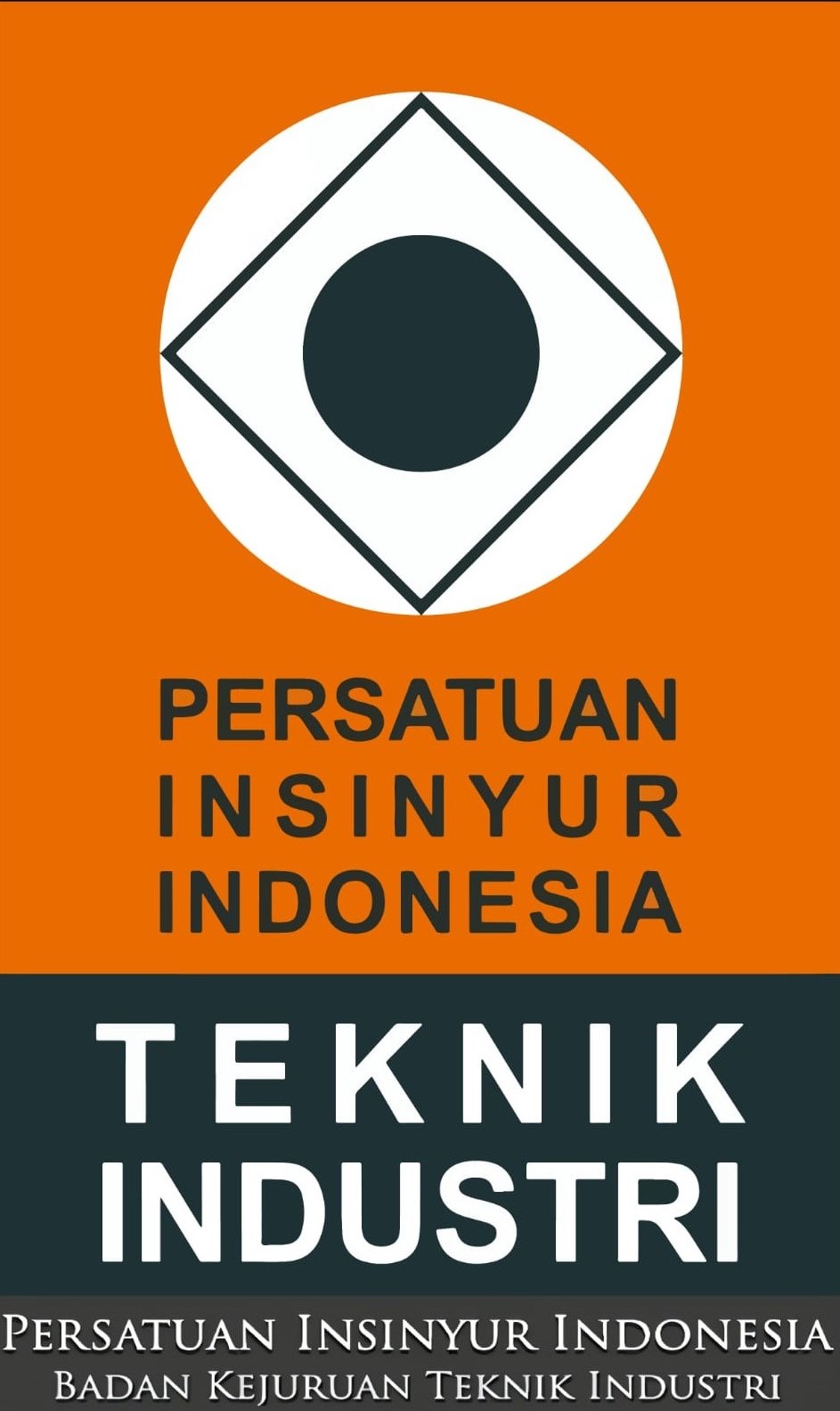Flood Disaster Relief Operation: A Systematic Literature Review
DOI:
https://doi.org/10.32734/jsti.v24i2.8378Keywords:
Flood, Disaster, Disaster Relief Operations (DRO), Disaster ManagementAbstract
A flood is natural disaster that often occurs in many regions. Flood has a significant impact on the nature conditions, local communities, and regional economic losses. The flood can happen due to a damaged environmental system; therefore, it needs deeper study and extra effort to prevent it. Thus, an appropriate and right Disaster Relief Operation (DRO) is needed in responding to flood disaster. In this research, 50 articles categorized in "flood disaster relief operation" published in the range 2012 to 2022 have been reviewed. This review is conducted by using the Systematic Literature Review (SLR) method. This study aims to explore and analyze flood DRO. The findings reveal that the flood DRO still has several weaknesses in the current system that should be improved: the lack of an integrated information system, not enough collaboration of the stakeholders, the lateness of information exchange, and unplanned relief operations through the preparation. For further research, it is recommended to implement the proposed system in the relief operations execution.
Downloads
References
M. Ecodrainage et al., “Penanggulangan Bencana Banjir Berdasarkan Tingkat Kerentanan dengan Metode Ecodrainage Pada Ekosistem Karst di Dukuh Tungu, Desa Girimulyo, Kecamatan Panggang, Kabupaten Gunungkidul, DIY,†J. Geogr., vol. 16, no. 1, pp. 7–15, 2019, doi: 10.15294/jg.v16i1.17136.
C. L. Yang, M. C. Shieh, C. Y. Huang, and C. P. Tung, “A derivation of factors influencing the successful integration of corporate volunteers into public flood disaster inquiry and notification systems,†Sustain., vol. 10, no. 6, 2018, doi: 10.3390/su10061973.
W. Wisetjindawat, H. Ito, M. Fujita, and H. Eizo, “Planning Disaster Relief Operations,†Procedia - Soc. Behav. Sci., vol. 125, pp. 412–421, 2014, doi: 10.1016/j.sbspro.2014.01.1484.
R. G. L. Narayanan and O. C. Ibe, “Joint Network for Disaster Relief and Search and Rescue Network Operations,†Wirel. Public Saf. Networks 1 Overv. Challenges, pp. 163–193, 2015, doi: 10.1016/B978-1-78548-022-5.50006-6.
A. Maghsoudi and M. Moshtari, “Challenges in disaster relief operations: evidence from the 2017 Kermanshah earthquake,†J. Humanit. Logist. Supply Chain Manag., vol. 11, no. 1, pp. 107–134, Feb. 2021, doi: 10.1108/JHLSCM-08-2019-0054/FULL/PDF.
D. Van Niekerk, “From disaster relief to disaster risk reduction: a consideration of the evolving international relief mechanism,†J. Transdiscipl. Res. South. Africa, vol. 4, no. 2, Apr. 2008, doi: 10.4102/TD.V4I2.158.
K. E. Putri, A. B. Arianto, and L. T. Listianingsih, “Faktor-Faktor Yang Mendukung Kesiapsiagaan Perawat Dalam Menghadapi Bencana: Literature Review,†J. Sahabat Keperawatan, vol. 03, no. 02, pp. 56–70, 2021.
B. Wismnadanikung and T. Hardono, “Tindakan Penanggulangan Bencana Secara Berkelanjutan,†Teknis, pp. 68–75, 2014, [Online]. Available: https://jurnal.polines.ac.id/index.php/teknis/article/view/693.
A. Fekete, “Motivation, satisfaction, and risks of operational forces and helpers regarding the 2021 and 2013 flood operations in germany,†Sustain., vol. 13, no. 22, 2021, doi: 10.3390/su132212587.
S. Thiruchelvam et al., “Development of Humanitarian Supply Chain Performance Conceptual Framework in Creating Resilient Logistics Network,†Malaysian J. Geosci., vol. 2, no. 1, pp. 30–33, 2018, doi: 10.26480/mjg.01.2018.30.33.
Q. Yin et al., “Flood disaster risk perception and urban households’ flood disaster preparedness: The case of accra metropolis in Ghana,†Water (Switzerland), vol. 13, no. 17, pp. 1–18, 2021, doi: 10.3390/w13172328.
W. Z. Hendra and Kismartini, “Community Participation in Flood Disaster Management in Sumbawa Regency (case study in Songkar Village),†E3S Web Conf., vol. 73, pp. 0–4, 2018, doi: 10.1051/e3sconf/20187308004.
R. Yuliana, Kismartini, and Suharyanto, “The Flood Disaster Management Model in Wonosari Village Semarang City,†E3S Web Conf., vol. 73, pp. 4–7, 2018, doi: 10.1051/e3sconf/20187308031.
R. Islam, R. Kamaruddin, S. A. Ahmad, S. J. Jan, and A. R. Anuar, “A review on mechanism of flood disaster management in Asia,†Int. Rev. Manag. Mark., vol. 6, no. 1, pp. 29–52, 2016.
S. Shafiai and M. S. Khalid, “Examining of issues on flood disaster management in Malaysia,†Int. Rev. Manag. Mark., vol. 6, no. 7Special Issue, pp. 51–56, 2016.
Y. N. Bria, N. Nursalam, and L. P. Sayrani, “Disaster management of Malaka district government in flood disaster management,†Ann. Manag. Organ. Res., vol. 1, no. 3, pp. 171–185, 2020, doi: 10.35912/amor.v1i3.334.
M. Y. Izham, R. Aznarahayu, M. A. Nurul Azni, and M. N. Norashila, “The River Basin Spatial Informative Nesting (E-BASIN) framework as an alternative approach for flood disaster management,†IOP Conf. Ser. Earth Environ. Sci., vol. 380, no. 1, 2019, doi: 10.1088/1755-1315/380/1/012005.
P. Yodsuban and K. Nuntaboot, “Community-based flood disaster management for older adults in southern of Thailand: A qualitative study,†Int. J. Nurs. Sci., vol. 8, no. 4, pp. 409–417, 2021, doi: 10.1016/j.ijnss.2021.08.008.
J. Rehman, O. Sohaib, M. Asif, and B. Pradhan, “Applying systems thinking to flood disaster management for a sustainable development,†Int. J. Disaster Risk Reduct., vol. 36, p. 101101, 2019, doi: 10.1016/j.ijdrr.2019.101101.
Zakaria et al, “Knowledge Integration Among Flood Disaster Management Team: Lessons from The Kemaman District,†J. ICT, vol. 3, no. 3, pp. 393–408, 2018.
R. Rustinsyah, R. A. Prasetyo, and M. Adib, “Social capital for flood disaster management: Case study of flooding in a village of Bengawan Solo Riverbank, Tuban, East Java Province,†Int. J. Disaster Risk Reduct., vol. 52, no. January 2020, p. 101963, 2021, doi: 10.1016/j.ijdrr.2020.101963.
W. A. Hammood, S. M. @Asmara, R. A. Arshah, O. A. Hammood, H. Al Halbusi, and M. A. Al-Sharafi, “Factors influencing the success of information systems in flood early warning and response systems context,†Telkomnika (Telecommunication Comput. Electron. Control., vol. 18, no. 6, pp. 2956–2961, 2020, doi: 10.12928/TELKOMNIKA.v18i6.14666.
T. N. Zaw and S. Lim, “The military’s role in disaster management and response during the 2015 Myanmar floods: A social network approach,†Int. J. Disaster Risk Reduct., vol. 25, pp. 1–21, 2017, doi: 10.1016/j.ijdrr.2017.06.023.
S. Chowdhury, A. Emelogu, M. Marufuzzaman, S. G. Nurre, and L. Bian, “Drones for disaster response and relief operations: A continuous approximation model,†Int. J. Prod. Econ., vol. 188, no. October 2016, pp. 167–184, 2017, doi: 10.1016/j.ijpe.2017.03.024.
T. P. Pangali Sharma, J. Zhang, U. A. Koju, S. Zhang, Y. Bai, and M. K. Suwal, “Review of flood disaster studies in Nepal: A remote sensing perspective,†Int. J. Disaster Risk Reduct., vol. 34, pp. 18–27, 2019, doi: 10.1016/j.ijdrr.2018.11.022.
A. D’Uffizi, M. Simonetti, G. Stecca, and G. Confessore, “A simulation study of logistics for disaster relief operations,†Procedia CIRP, vol. 33, pp. 157–162, 2015, doi: 10.1016/j.procir.2015.06.029.
R. A. Atanga, “The role of local community leaders in flood disaster risk management strategy making in Accra,†Int. J. Disaster Risk Reduct., vol. 43, p. 101358, 2020, doi: 10.1016/j.ijdrr.2019.101358.
H. S. Munawar, A. W. A. Hammad, and S. T. Waller, “A review on flood management technologies related to image processing and machine learning,†Autom. Constr., vol. 132, no. September, p. 103916, 2021, doi: 10.1016/j.autcon.2021.103916.
N. Bhuvana and I. Arul Aram, “Facebook and Whatsapp as disaster management tools during the Chennai (India) floods of 2015,†Int. J. Disaster Risk Reduct., vol. 39, no. March 2018, p. 101135, 2019, doi: 10.1016/j.ijdrr.2019.101135.
Z. Ghaffari, M. M. Nasiri, A. Bozorgi-Amiri, and A. Rahbari, “Emergency supply chain scheduling problem with multiple resources in disaster relief operations,†Transp. A Transp. Sci., vol. 16, no. 3, pp. 930–956, 2020, doi: 10.1080/23249935.2020.1720858.
R. Dutt, M. Basu, K. Ghosh, and S. Ghosh, “Utilizing microblogs for assisting post-disaster relief operations via matching resource needs and availabilities,†Inf. Process. Manag., vol. 56, no. 5, pp. 1680–1697, 2019, doi: 10.1016/j.ipm.2019.05.010.
R. Berariu, C. Fikar, M. Gronalt, and P. Hirsch, “Understanding the impact of cascade effects of natural disasters on disaster relief operations,†Int. J. Disaster Risk Reduct., vol. 12, pp. 350–356, 2015, doi: 10.1016/j.ijdrr.2015.03.005.
D. Sarma, A. Das, and U. K. Bera, “Uncertain demand estimation with optimization of time and cost using Facebook disaster map in emergency relief operation,†Appl. Soft Comput. J., vol. 87, p. 105992, 2020, doi: 10.1016/j.asoc.2019.105992.
A. Behl and P. Dutta, “Engaging donors on crowdfunding platform in Disaster Relief Operations (DRO) using gamification: A Civic Voluntary Model (CVM) approach,†Int. J. Inf. Manage., vol. 54, no. September 2019, p. 102140, 2020, doi: 10.1016/j.ijinfomgt.2020.102140.
M. Rahman et al., “Development of flood hazard map and emergency relief operation system using hydrodynamic modeling and machine learning algorithm,†J. Clean. Prod., vol. 311, no. January, p. 127594, 2021, doi: 10.1016/j.jclepro.2021.127594.
L. L. Putong and M. M. De Leon, “A Modified Balcik Last Mile Distribution Model for Relief Operations Using Open Road Networks,†Procedia Eng., vol. 212, pp. 133–140, 2018, doi: 10.1016/j.proeng.2018.01.018.
S. Li et al., “Automatic near real-time flood detection using Suomi-NPP/VIIRS data,†Remote Sens. Environ., vol. 204, no. August, pp. 672–689, 2018, doi: 10.1016/j.rse.2017.09.032.
N. Singkran, “Flood risk management in Thailand: Shifting from a passive to a progressive paradigm,†Int. J. Disaster Risk Reduct., vol. 25, pp. 92–100, 2017, doi: 10.1016/j.ijdrr.2017.08.003.
C. Luu, J. Von Meding, and S. Kanjanabootra, “Flood risk management activities in Vietnam: A study of local practice in Quang Nam province,†Int. J. Disaster Risk Reduct., vol. 28, no. February, pp. 776–787, 2018, doi: 10.1016/j.ijdrr.2018.02.006.
M. Othman, M. N. Ahmad, A. Suliman, N. H. Arshad, and S. S. Maidin, “COBIT principles to govern flood management,†Int. J. Disaster Risk Reduct., vol. 9, pp. 212–223, 2014, doi: 10.1016/j.ijdrr.2014.05.012.
J. M. R. Mercado, A. Kawamura, H. Amaguchi, and C. J. P. Rubio, “Fuzzy based multi-criteria M&E of the integrated flood risk management performance using priority ranking methodology: A case study in Metro Manila, Philippines,†Int. J. Disaster Risk Reduct., vol. 64, no. January, p. 102498, 2021, doi: 10.1016/j.ijdrr.2021.102498.
C. Paciarotti, A. Cesaroni, and M. Bevilacqua, “The management of spontaneous volunteers: A successful model from a flood emergency in Italy,†Int. J. Disaster Risk Reduct., vol. 31, no. February, pp. 260–274, 2018, doi: 10.1016/j.ijdrr.2018.05.013.
M. P. Mohanty and S. Karmakar, “WebFRIS: An efficient web-based decision support tool to disseminate end-to-end risk information for flood management,†J. Environ. Manage., vol. 288, no. March, p. 112456, 2021, doi: 10.1016/j.jenvman.2021.112456.
X. Tan et al., “Agent-as-a-service-based geospatial service aggregation in the cloud: A case study of flood response,†Environ. Model. Softw., vol. 84, pp. 210–225, 2016, doi: 10.1016/j.envsoft.2016.07.001.
R. A. Garrido, P. Lamas, and F. J. Pino, “A stochastic programming approach for floods emergency logistics,†Transp. Res. Part E Logist. Transp. Rev., vol. 75, pp. 18–31, 2015, doi: 10.1016/j.tre.2014.12.002.
C. DÃaz-Delgado and J. Gaytán Iniestra, “Flood risk assessment in humanitarian logistics process design,†J. Appl. Res. Technol., vol. 12, no. 5, pp. 976–984, 2014, doi: 10.1016/S1665-6423(14)70604-2.
M. R. Nair, G. R. Ramya, and P. B. Sivakumar, “Usage and analysis of Twitter during 2015 Chennai flood towards disaster management,†Procedia Comput. Sci., vol. 115, pp. 350–358, 2017, doi: 10.1016/j.procs.2017.09.089.
P. S. Atmojo and S. S. Sachro, “Disaster Management: Selections of Evacuation Routes Due to Flood Disaster,†Procedia Eng., vol. 171, pp. 1478–1485, 2017, doi: 10.1016/j.proeng.2017.01.475.
I. A. Rana, M. Asim, A. B. Aslam, and A. Jamshed, “Disaster management cycle and its application for flood risk reduction in urban areas of Pakistan,†Urban Clim., vol. 38, no. June, p. 100893, 2021, doi: 10.1016/j.uclim.2021.100893.
M. Anbarasan et al., “Detection of flood disaster system based on IoT, big data and convolutional deep neural network,†Comput. Commun., vol. 150, no. November 2019, pp. 150–157, 2020, doi: 10.1016/j.comcom.2019.11.022.
H. R. Goyal, K. K. Ghanshala, and S. Sharma, “Recommendation based rescue operation model for flood victim using smart IoT devices,†Mater. Today Proc., vol. 46, no. xxxx, pp. 10418–10424, 2021, doi: 10.1016/j.matpr.2020.12.959.
T. Mai et al., “Defining flood risk management strategies: A systems approach,†Int. J. Disaster Risk Reduct., vol. 47, no. October 2019, p. 101550, 2020, doi: 10.1016/j.ijdrr.2020.101550.
Z. Wan et al., “A cloud-based global flood disaster community cyber-infrastructure: Development and demonstration,†Environ. Model. Softw., vol. 58, pp. 86–94, 2014, doi: 10.1016/j.envsoft.2014.04.007.
C. Songchon, G. Wright, and L. Beevers, “Quality assessment of crowdsourced social media data for urban flood management,†Comput. Environ. Urban Syst., vol. 90, no. July, p. 101690, 2021, doi: 10.1016/j.compenvurbsys.2021.101690.
U. Iqbal, P. Perez, W. Li, and J. Barthelemy, “How computer vision can facilitate flood management: A systematic review,†Int. J. Disaster Risk Reduct., vol. 53, no. January, p. 102030, 2021, doi: 10.1016/j.ijdrr.2020.102030.
Downloads
Published
How to Cite
Issue
Section
License
Copyright (c) 2022 Jurnal Sistem Teknik Industri

This work is licensed under a Creative Commons Attribution-ShareAlike 4.0 International License.
The Authors submitting a manuscript do so on the understanding that if accepted for publication, the copyright of the article shall be assigned to TALENTA Publisher Universitas Sumatera Utara as the publisher of the journal.
Copyright encompasses the rights to reproduce and deliver the article in all forms and media. The reproduction of any part of this journal, its storage in databases, and its transmission by any form or medium will be allowed.



















